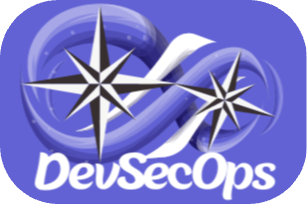In addressing the complex challenges posed by cybercrime and ensuring a robust defense strategy, we have leveraged a combination of methodologies and frameworks.

These methodologies form the foundation for our approach to comprehensively tackle cyber threats, all with an agile approach in mind and action in security best practices.
Transforming Threats into Frameworks #
Frameworks enable continuous improvement. Shared experiences and lessons learned help organizations identify enhancement areas and drive innovation in cloud security.
As new threats emerge and technologies evolve, this collaborative environment fosters rapid development of countermeasures and implementation of cutting-edge security solutions.
Overview of Security Frameworks #
| Framework | Description | Key Features |
|---|---|---|
| ISO/IEC 27001 | Guidelines for establishing, implementing, maintaining, and improving an information security management system. | Helps assess security risks, implement controls, and monitor and improve security posture. |
| NIST Cybersecurity Framework | Guidelines, best practices, and standards for managing cybersecurity risks. | Emphasizes a risk-based approach and aligns cybersecurity activities with business objectives. |
| CSA Security Guidance | Best practices and security controls tailored for cloud environments. | Covers data protection, identity and access management, incident response, and compliance. |
| CIS Controls | Prioritized cybersecurity best practices by the Center for Internet Security (CIS). | Provides specific actions to improve security posture and mitigate common cyber threats. |
| GDPR | Requirements for the protection of personal data, impacting security practices for organizations handling EU citizens' data. | Outlines obligations related to data protection, privacy, and breach notification. |
| HITRUST CSF | Security and privacy controls framework for the healthcare industry. | Aligns with industry regulations and standards such as HIPAA. |
| OWASP | Community-driven organization focused on software application security. | Provides resources like the Top Ten Project to address common web application security risks. |
With a common framework in place, organizations can ensure that their cloud environments meet industry-accepted security standards and reduce vulnerabilities.
TOGAF Framework Implementation #
The significance of robust architectural solutions cannot be overstated.
At our core, we specialize in crafting not just solutions but architectural marvels that pave the way for transformative business outcomes.

Our mission is to design and implement cutting-edge technical architectures that not only meet but exceed the needs of our clients. To achieve this, we have harnessed the power of the TOGAF framework, a proven methodology that ensures the alignment of technology with strategic objectives.
The Open Group Architecture Framework has been instrumental in structuring our cybersecurity strategy.
This provides a structured approach for designing, planning, implementing, and governing enterprise information technology architecture.
We adhere to and apply TOGAF principles to ensure that our cybersecurity solutions align with our organization's overall objectives and architecture.
As framework guides us in developing a holistic view of our cybersecurity landscape, identifying vulnerabilities, and establishing a robust defense strategy.
Incident Response Framework #
In addition to proactive measures, we have implemented a comprehensive Incident Response Framework.
This framework defines clear protocols for identifying, analyzing, and mitigating security incidents.
It ensures that our organization can swiftly respond to cyber incidents, minimizing their impact and facilitating a rapid return to normal operations.
Vulnerability Assessments #
Regular vulnerability assessments should be conducted to identify and evaluate potential weaknesses in the organization's infrastructure. This includes analyzing the network architecture, software configurations, and access controls. The findings from these assessments can help organizations prioritize their security efforts and take necessary steps to remediate vulnerabilities.
Incident Response Plans #
Organizations should develop comprehensive incident response plans that outline the steps to be taken in the event of a security incident. These plans should include predefined roles and responsibilities, communication protocols, and a clear escalation process. By having a well-defined incident response plan in place, organizations can minimize the impact of security incidents and quickly respond to mitigate further damage.

In order to effectively mitigate the constantly evolving threats in today's digital landscape, organizations need to prioritize proactive measures that go beyond reactive approaches.
We help you leverage various security frameworks and best practices to guide your security efforts.
These frameworks provide a structured approach for your business to assess, implement, and manage security controls effectively.
Industry Collaboration #
Along with the adoption of standardized security frameworks, ensures consistent security practices across cloud service providers and promotes a more secure cloud computing ecosystem.
Cybersecurity Professional Adoption #
| Security Framework | Adoption |
|---|---|
| ISO/IEC 27001 | 60% |
| NIST Cybersecurity Framework | 75% |
| Cloud Security Alliance (CSA) Security Guidance | 90% |
| CIS Controls | 40% |
| GDPR | 70% |
| HITRUST CSF | 50% |
| OWASP | 80% |
The adoption of standardized security frameworks is a crucial step toward achieving consistent security practices across different CSPs.
These frameworks provide a set of guidelines and best practices that enable CSPs to implement robust security measures.
Accumulating Frameworks for Success and Security #
The implementation of standardized security frameworks represents a pivotal stride towards attaining consistent security practices among diverse CSPs. These frameworks serve as a compass, directing organizations to adopt robust security measures cohesively.
We empower you through an array of reputable frameworks at your disposal to guide your security initiatives and ensure your environments conform to the latest innovation.
